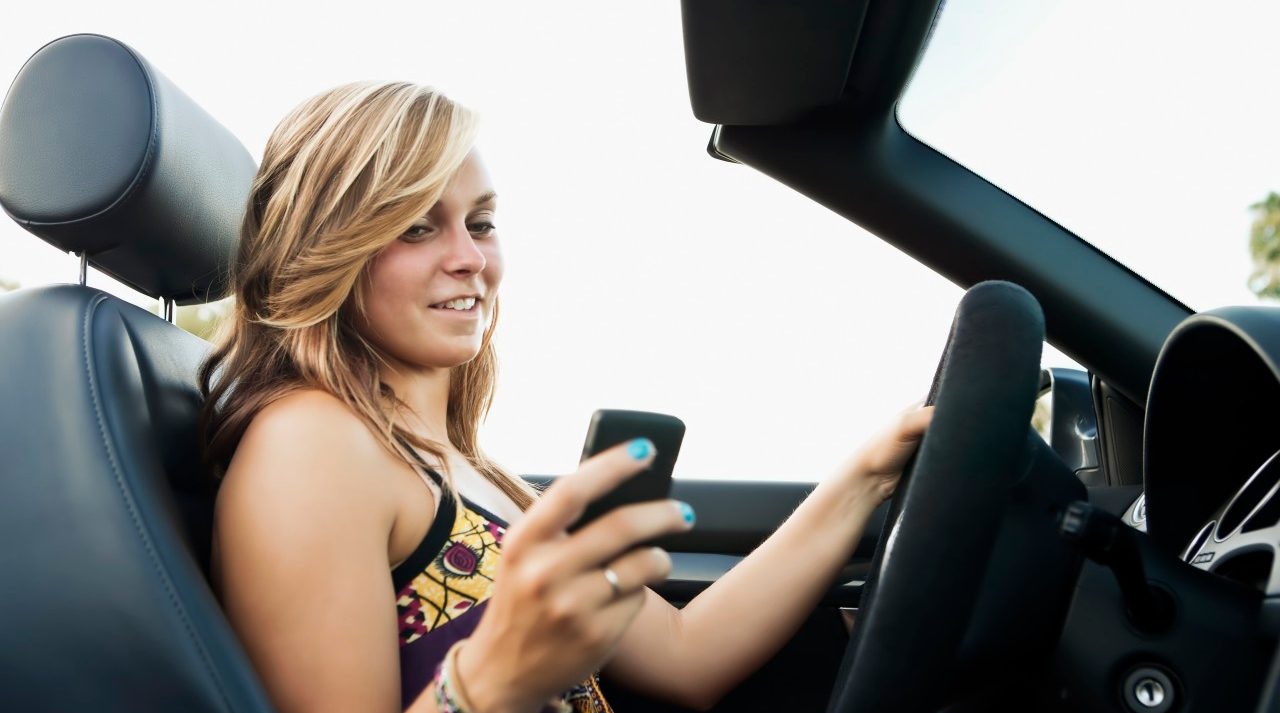Texting While Driving Is a Good Way to Die

Hands-free phones help, but you still shouldn’t try to do other tasks while driving.
Consider this: It takes five seconds, on average, to look at a text. If you’re traveling at 55 mph, that's enough time to cover the length of a football field blindfolded.
Do you let yourself get distracted when you drive? In 2013, more than 3,000 people in the United States died and another 424,000 were injured in a crash because drivers took their eyes off the road, didn’t keep their hands on the wheel, or let their minds wander. You can get distracted by eating, an especially animated or intense conversation, manually using a cell phone to check a text or get directions, or using a device for music. The numbers of people who die or are injured in crashes involving a distracted driver have been soaring as we use our phones more often behind the wheel.
Yes, you’re safer if you’re using a head-set, the U.S. Department of Transportation reports, but you may be tempted to use your hands as well. Besides, simply hearing the ding of an incoming message or email is distracting. Feeling your phone vibrate is also a problem. Researchers in one study concluded that hearing a stranger’s phone ring can interrupt your concentration as well.
We all know that it’s dangerous to let our hands, eyes, or minds wander, but we naturally want to respond to stimulation, especially on a boring, routine drive. Teens especially live through their phones. They’re primed to respond.
Americans are more likely to talk on the phone or read or send texts and emails while driving than drivers in several other countries in Europe, a study by the Centers for Disease Control and Prevention concluded. For example, 69 percent of U.S. adult drivers under the age of 64 said that they had talked on the cell while driving in the last 30 days, compared to 21 percent in the United Kingdom and 59 percent in Portugal. More than 30 percent said they’d read or sent texts or emails, compared to 15 percent in Spain. Nearly half of all U.S. high school students aged 16 years or older text or email while driving.
Most states now ban texting while driving; several have clever marketing campaigns to emphasize the danger. In fact, hospitalizations related to car crashes dropped by 7 percent from 2003 to 2010 in states with the strictest rules, according to one study. President Obama has prohibited federal employees from texting while driving on government business or with government equipment. It’s also illegal for anyone driving a commercial vehicle to text. If a commercial vehicle carries hazardous materials, drivers can’t use hand-held cell phones at all.
To help keep your teen driving safely, you might consider a smartphone app that blocks texting in moving vehicles. And it’s only fair, if you have cellphone addictive tendencies, to put an app on your own phone as well. Several of these apps, AT&T’s DriveMode, for example, are free. You can also install a camera in your teen’s car. In one study, teens who knew the camera was watching had 80 percent fewer “high-risk driving events.”
The takeaway: Before you start driving, set up your GPS and music and check any emails or texts relevant to your drive. Then turn off your cell phone’s notification features and put your phone out of reach. Ask your passengers to put their own phones on vibrate. If you need a phone to figure out where you’re going, designate one of your passengers to do all texting and monitor the GPS.
Updated:
April 08, 2020
Reviewed By:
Christopher Nystuen, MD, MBA